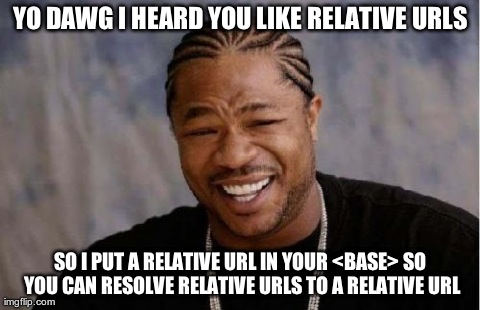#microformats2 wild examples list growing quickly, will your site be the next? microformats.org/wiki/microformats2#Examples_in_the_wild
I’m thinking the time might have come to write a wrapper around #php DOMDocument which actually makes it usable. Thoughts:
- automatic conversion of various encodings to HTML entities to scoot round encoding issues
- XPath queries still work but
querySelectorandquerySelectorAllare implemented for both the document and individual elements via Symfony XPath → CSS converter and relative XPath queries - A DOMNodeList which actually implements ArrayAccess instead of acting like a fake array
- Perhaps some javascript-inspired property names like
innerText,innerHTMLfor consistency - Maybe some jQuery-influenced shortcut goodness for doing things like removing/replacing elements
RSS enthusiasts are HTML enthusiasts who haven’t met #microformats 2 yet. microformats.org/wiki/microformats2
@benwerd loving your work on idno! Just had a look at the source, great that you’re using #microformats 2, I have some suggestions/corrections:
.h-entryis better off where you’ve got.idno-entryso then the author.h-cardcan be scoped into the entry- add
.p-authorto the.h-cardfor each.h-entryto explicitly declare authorship - put
.h-as-*on the same element as.h-entry .idno-entry - put
.u-urlwhere you currently have.dt-published, move.dt-publishedto thetimeelement
Thanks to Aaron Parecki you can see how a page is parsed here, or use my php-mf2 demo sandbox for experimentation by hand.
@thatemil I’ve always considered style guides/pattern libraries to be unit tests for HTML+CSS, and you could automate them with JS if they get too unwieldy.
thatEmil i have heard html is important for that web thing
#TIL that you can put a relative URL in <base> (via Tantek Çelik)
If you want to generate real PDFs from HTML (i.e. with page breaks and real text, not just vast screenshots inside a PDF) then wkpdf is the way to go. Super fast, installs easily, great output.
Laura Kalbag my current pet peeve is a h1, then a h2 directly below it which is not a header, just a paragraph the author wanted to make look bigger (or a subheader, like bootstrap does with the downright weird h1 -> small). I saw it once a while ago, now I’m seeing it everywhere :/
Really Google? em to embolden search terms in results listings? #html
Cross-browser selection UI injection flow:
- Listen for
mouseuponbody - When triggered, let s be
window.getSelection() - If
s.isCollapsed === false, return - Else, let r be
s.getRangeAt(0) - Create a new element e
- Call
r.surroundContents(e) e.innerHTMLande.textContentnow return useful values, and e’s coordinates can be used to inject UI into the page
To resolve: what element should e be? Or more accurately, what display property should it have? Possibly inline-block (inline mucks up if selection is across block elements, block mucks up selections within text nodes)
r.surroundContent, namely that it does not handle partial element selections. See MDNs explanation and solution.
aral oh so you're suggesting it'd be a Boolean attr? That I could get behind – easy to polyfill too.
aral I disagree, "continue" is confusing compared to start. Start = start from a number, continue = what? Continue from a number? So the list should start from that number plus one? Or continue from another ol (perhaps by using an id reference)?
Rolled out usage of the menu element on #taproot. I’m looking forward to more browser support for HTML context menus, that will really open up the possibilities for cross-browser extensions
To all exeter_web people who saw my #microformats talk last night: I documented my usage of µf on my own site, hopefully it’s a useful real–world reference if you’re interested in using µf2 yourselves :)
@idiot loving “He was
:).content, but was he .happy?”
Forget HTML5. I’m working in HTML+ from now on!
I have to say I am very impressed with @twitter’s tweet embedding HTML. Progressive enhancement + graceful degradation at it’s best.
This is a fantastic HTML5 game — very clever gameplay: http://www.currantcat.com/convergence/
 Emil Björklund
Emil Björklund
 Laura Kalbag
Laura Kalbag Visual Idiot
Visual Idiot